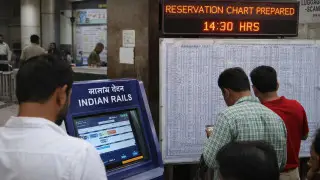
Artificial Intelligence (Pixabay/geralt)
In a groundbreaking achievement, the Kerala Police have solved a chilling 2006 murder case nearly 20 years later, employing advanced artificial intelligence (AI) tools. The investigation led to the arrest of two men accused of brutally killing a woman and her twin infants.
On February 10, 2006, in Anchal, a town in Kerala’s Kollam district, Santamma returned home from the Panchayat office to discover a horrifying scene—her daughter, Ranjini, and Ranjini’s 17-day-old twins were lying in a pool of blood, their throats slit. The police identified two suspects, Divil Kumar and Rajesh, who were stationed at a military base in Pathankot at the time. Despite efforts, the accused evaded capture, and the case went cold.
In 2023, Kerala Police’s Technical Intelligence Wing revisited unsolved cases using AI. Old photographs of the suspects were digitally aged to estimate their current appearance. The breakthrough came when a wedding photograph on social media bore a striking 90% resemblance to one of the suspects. This clue identified a man in Puducherry, known as “Praveen Kumar,” who was later confirmed to be Rajesh.
The arrests of Rajesh and Divil Kumar on January 4, 2025, marked the resolution of a decades-old mystery. The suspects had assumed new identities—Rajesh as Praveen Kumar and Divil as Vishnu—and were working as interior designers.
Investigations revealed that Ranjini and Divil, once in a relationship, fell out when she became pregnant. Ranjini’s insistence on keeping the pregnancy and seeking legal action for DNA verification led Divil and his associate Rajesh to conspire to murder her and the newborns.
Kerala ADGP Manoj Abraham lauded the use of AI in tracking the suspects, stating, “This case highlights how modern technology can assist in delivering justice, no matter how much time has passed.”













Copyright © 2025 Top Indian News
